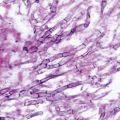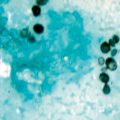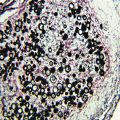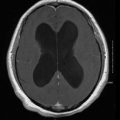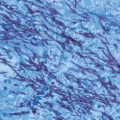CD4+ T lymphocyte cell count (cells/µl)
Fungal infections
> 500
Candidal vaginitis
200–500
Thrush (oropharyngeal candidiasis)
< 200
PCP, disseminated histoplasmosis, disseminated coccidioidomycosis
< 100
Cryptococcosis, candidal esophagitis, penicilliosis
Organ Transplantation
Solid organ and HSCT recipients are at great risk for fungal infections [16–18]. In addition to immunosuppressive therapies, the mucosal damage and intensive therapy associated with these procedures place the persons who receive them at risk for the entire spectrum of fungal disease. Transplant medicine has seen substantial advancements in tailoring regimens to minimize the duration of neutropenia and to reduce immunosuppressive treatments used to control rejection. Unfortunately, most of these still place patients at a substantial risk for opportunistic infections. In solid organ transplantation, the risk of fungal infection is associated with risk surrounding the initial surgery and the use of immunosuppression to prevent rejection. This risk varies greatly based on organ transplanted and underlying condition of the recipient. As an example, in liver transplantation, the substantial risk of Candida infection in the first month is mostly associated with surgical manipulation of the gastrointestinal tract and the need for intensive care monitoring, as well as initial immunosuppressive agents given to control rejection (Table 1.2). Lung transplants are at high risk for invasive pulmonary aspergillosis, likely secondary to the route of inoculation and immunosuppression. Although a similar sequence of occurrence of fungal infection is seen in HSCT, the underlying factors creating risk differ from those of solid organ transplant (Table 1.3). In HSCT, initial conditioning commonly leads to neutropenia and breakdown of the mucosal surfaces. This neutropenia can be prolonged and associated with life-threatening mold infections. In allogeneic HSCT, graft-versus-host disease (GvHD) and its treatment may put the patient at risk for fungal infection for a prolonged period of time following engraftment.
Table 1.2
Fungi associated with hematopoietic stem cell transplantation
Time period | Common fungi | Other fungi |
|---|---|---|
Preengraftment (< 30 days) | Candida | Aspergillus |
Postengraphment (30–100 days) | Aspergillus, Candida, Pneumocystis | Mucorales, Fusarium, Pseudallescheria (Scedosporium) |
Late (> 100 days) | Aspergillus, Pneumocystis |
Table 1.3
Fungi associated with solid organ transplantation. (Table produced from data in reference [16])
Time period | Common fungi | Other fungi |
|---|---|---|
First month | Candida | |
1–6 months | Aspergillus, Pneumocystis, Cryptococcus | Endemic fungia |
> 6 months | Endemic fungia | Cryptococcus |
Health Care Exposure (Nosocomial)
A multitude of risk factors for nosocomial fungal infections have been identified (Table 1.4) [6, 19, 20]. Unfortunately, many of these health care-associated risk factors overlap with those associated with bacterial infections or are risks that are common to many or most hospitalized patients. This is especially true for those patients hospitalized in intensive care units, the majority of whom have central venous catheters and are receiving broad-spectrum antibiotics [21, 22]. In addition to the use of vascular catheters, other procedures including urinary catheterization and intubation establish portals of entry for fungal pathogens. Other risk factors include immunosuppression seen with the use of corticosteroids and chemotherapy, and with malnutrition and malignancy. Infusion of contaminated infusates, inclusion of lipids in parenteral nutrition, and construction within the hospital are additional exposures that can lead to fungal infections. A few specific risks allow the clinician to suspect certain fungi. Ketoacidosis and deferoxamine therapy has been clearly shown to be a risk for mucormycosis (zygomycosis). Unfortunately, given the overlapping nature of most of these risk factors with those associated with bacterial infections, it is often difficult to apply these risk factors to differentiate patients at higher risk of fungal versus bacterial infection.
Table 1.4
Risk factors commonly associated with health care-associated invasive mycoses (Table produced from data in reference [17])
Mycosis | Risk factors |
|---|---|
Candidiasis | Candida colonization, surgery (especially abdominal), acute renal failure, parenteral nutrition, central venous catheters, neutropenia, broad-spectrum antibacterial antimicrobials, mucosal surface disruption |
Aspergillosis | Prolonged neutropenia, corticosteroids, neutrophil dysfunction, hematologic malignancy, cytotoxic drugs, AIDS, HSCT (highest in allogeneic), solid organ transplantation (highest heart-lung), underlying lung disease, GvHD, GvHD therapies (TNF-α blockers) |
Community Exposure
The fungi that cause community-acquired infections commonly originate in the environment and are “true pathogens” (i.e., cause disease in persons with normal immune status). Most are restricted to certain geographic environments or exposure risks (Table 1.5). The source of disease includes inhalation, ingestion, or traumatic inoculation of the fungi. Diseases most commonly afflict the lungs, paranasal sinuses, skin, and soft tissues. Rarely, disseminated, central nervous system, or osteoarticular disease occurs. The most commonly recognized community-acquired infections are the endemic mycoses, each with their limited geographical areas of exposure. With the extensive use of antibiotics, corticosteroids, and other immune modulators in the community, as well as the increased number of elderly, and population of immunocompromised persons receiving their care outside of the hospital, the boundaries between community-acquired and health care-associated infection have become blurred.
Table 1.5
Geographic areas in which the endemic mycoses reside
Mycosis | Region | Specific countries/areas with increased prevalence | Associated exposure risksa |
|---|---|---|---|
Blastomycosis | North Americab | Southeastern and South central USA, Canada | Soil exposure near fresh water (fishing, hunting, farming, construction) |
Coccidioidomycosis | Western hemisphere | Southwestern USA, Central and South America | Soil/dust exposure (construction, archeology) |
Histoplasmosis | Worldwide | Mississippi and Ohio River valleys, Western Africa | Soil or organic material associated with bird or bat guano (construction, demolition, spelunking) |
Paracoccidioidomycosis | Latin America | Brazil, Columbia, Venezuela, Ecuador, Argentina | Farming or other outdoor employment |
Penicilliosisc | Southeast Asia | China, Northeast India, Taiwan, Thailand, Vietnam
Stay updated, free articles. Join our Telegram channel
Full access? Get Clinical Tree
 Get Clinical Tree app for offline access
Get Clinical Tree app for offline access

|
